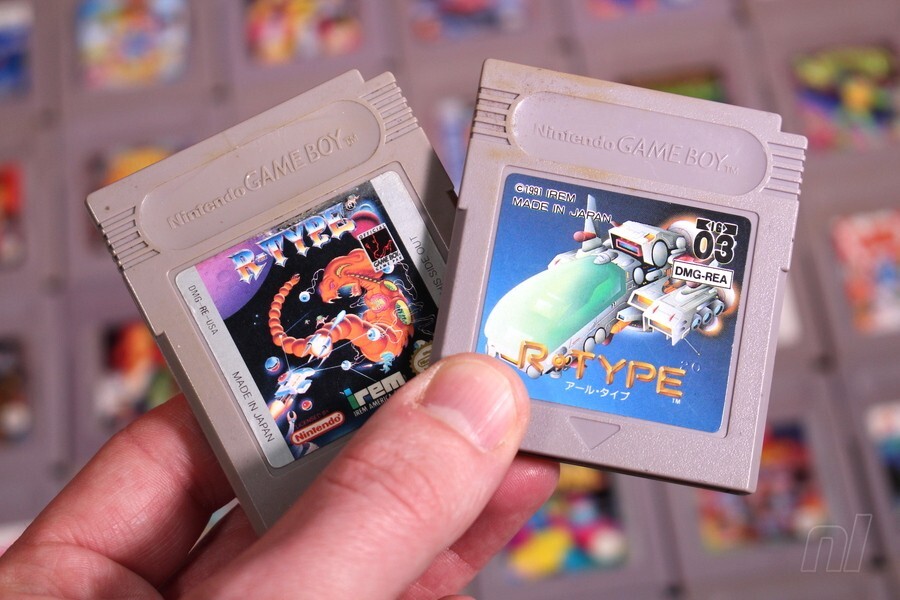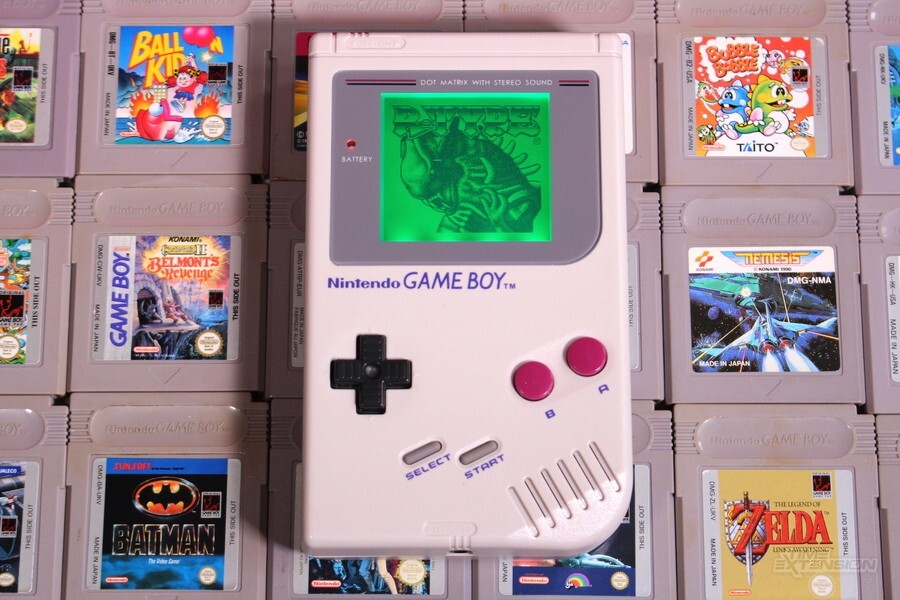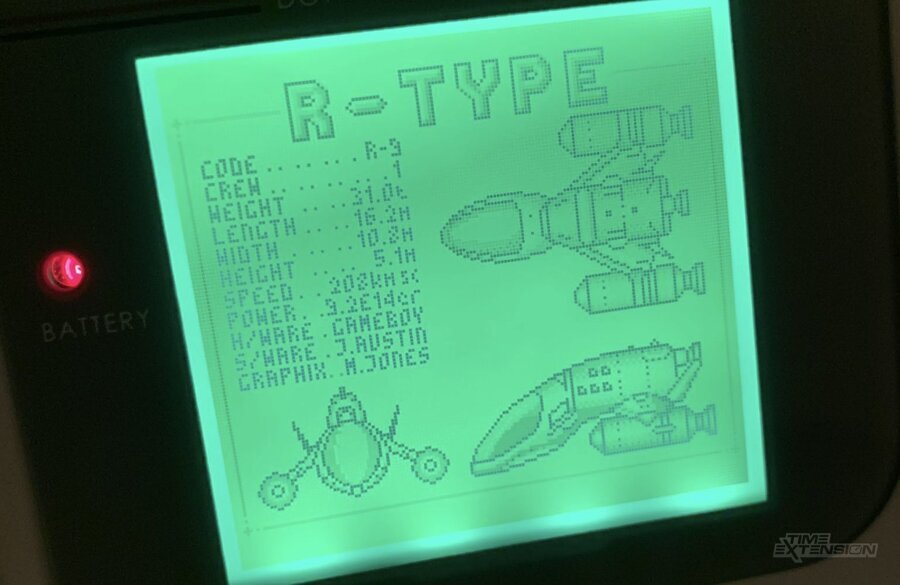
The Nintendo Game Boy turns 30 this Sunday, and to celebrate this amazing occasion we’ll be running a series of related features this week, right up to the big day.
The concept of ‘de-making’ a game is one that most modern players will be familiar with; you take a recent title, strip it down to its bare essentials and then make it ‘work’ in a retro-style, taking inspiration from classic machines such as the NES, ZX Spectrum or Mega Drive. It’s a fun approach which allows developers to flex their creative muscle and see how modern games could look if they were somehow flung back in time a few decades.
However, veteran developer Jas Austin was doing this for real back in the early ’90s. He worked at UK studio Bits, which, amongst creating licenced titles like Terminator 2: Judgment Day, Robin Hood: Prince of Thieves and The Amazing Spider-Man 2, was commissioned to port arcade titles to the humble monochrome Game Boy.
It was the first platform where I had hardware sprites and scrolling at my disposal, so this was new to me
One of Austin’s most famous projects from this period was the Game Boy port of Irem’s seminal coin-op shooter, R-Type. Now, R-Type was hardly cutting-edge at the time – it originally hit arcades in 1987 – but the task of shrinking down this genre classic so it would fit on the Game Boy’s tiny screen was no mean feat. We sat down with Austin to talk about how he did it.
Nintendo Life: Can you give us a little background on how you got into games development, and how you ended up at Bits Studio?
Jas Austin: I started in game development back in the early ’80s making ZX Spectrum games. Including Pi-Balled and Pi-in’ere for Automata, Nemesis the Warlock and Rex for Martrech, and Altered Beast for Activision. Towards the end of my Spectrum career, Jacqui Lyons of Marjacq was representing me, and it was through her I got the Activision deal. She was friends and worked with Foo Katan of Bits Studio, and put me forward for the R-Type Game Boy job. I was having trouble finding work as the Spectrum stuff had dried up, and I wasn’t having much success with the Amiga and ST market, so I jumped at the chance.

How did Bits become involved with developing for the Game Boy?
When I joined the team, Bits were already developing Game Boy versions of Loopz and Castelian (Hewson’s Nebulus) so they were already involved with Nintendo. But I found out later that Foo Katan’s other company PDS, which made hardware and software development tools, managed to bypass the Game Boy hardware protection, and this got them noticed and allowed them to develop on the hardware.
What was the Game Boy like to work on, compared to the other platforms around at that time?
Even though I dabbled in a bit of coding on Amiga and Atari ST, I didn’t release anything – so I really came to the Game Boy from the ZX Spectrum. Both had Z80 processors, so the changeover was pretty straightforward. It was the first platform where I had hardware sprites and scrolling at my disposal, so this was new to me. I found the sprites to be a bit of a double-edged sword; they were very useful, but also quite limited. If I remember correctly, it was 40 in total on screen and if you had any more than 10 in a line they would start to flicker.
How did Bits become involved with Irem? Was the studio approached directly, or did you have to pitch for the job?
Sadly I wasn’t privy to that information. Bits Already had the R-Type deal when I accepted the job to work on it. But I did hear rumours later that the game was pitched around a number of developers first, including some Japanese ones, and it was turned down, as it was thought it would be impossible to convert it to the Game Boy.
What tricks did you use in order to shrink a coin-op down to work on a monochrome portable?
One sneaky trick I used was multiplexing the sprites. Because of the screen was LCD, there was a very slight latency when turning off a sprite. So I was able to re-use some sprites by switching them every other frame. Because of the latency, they just appeared duller than normal. I used this mostly on bullets and the large R9 weapons, like the ripple laser.
How big was the team that worked on the port?
The core team was myself and artist Mak Jones. David Whittaker was bought in at the end for the music and sound effects. I’d worked with Mak before on some Spectrum games, we both worked ‘out of house’. Mak created the graphics on an ST, and we used very early phone modems for him to send me graphics. This was very unreliable, so sometimes he used good old snail mail to post me discs.
The hardest was the constant fight with memory. Back then, the cartridge size had a huge impact on production cost, so we always tried to use the smallest cart size we could
What was the hardest aspect of the port?
The hardest was the constant fight with memory. Back then, the cartridge size had a huge impact on production cost, so we always tried to use the smallest cart size we could. This was why two levels were cut straight away. Video space was also a problem. With the first level, we couldn’t fit both the background graphics and the boss in V-RAM. So you’ll notice a very short pause before the boss, this is where I dump some of the now unused background characters and replace them with the boss graphics.
How long did it to take to complete the conversion?
It’s so long ago I can’t remember how long it took us. I think it was a few months in total. I do recall that with the first meeting with Foo, I walked away with a basic dev kit, and we were tasked to get a first pass on level one in two weeks or so. There were some late nights, but we managed it. Having never developed on the Game Boy, I was certainly thrown in at the deep end.
Is it true that you managed to sneak your name into the game, despite being told you couldn’t?
Yes, this is true. For some reason, we were told that we were not permitted to have our names in-game. So Mak and I decided to try and sneak them in, which we did in the R9 data screen that appears in the attract mode. Luckily this was never picked up in testing… they might have been distracted with one of the enemies that they made us change, because it looked a bit like a foetus! I also managed to sneak in a special symbol into the background in level 4, something I also did in a lot of my earlier Spectrum games.

R-Type was hailed at the time for its faithfulness to the arcade original; how did it feel to get such positive reviews?
It felt great; it’s always good to see positive reviews of your games. Even before I worked on it, I was a huge fan of the arcade game, so wanted to make it as faithful as I possible. It also won a Golden Joystick award, which was pretty prestigious at the time. But personally what’s wonderful for me is that people are still playing and enjoying it all theses years later.
Irem clearly felt you did a good job as Bits was commissioned to not only do the sequel on the Game Boy, but also R-Type DX on the Game Boy Color. What kind of feedback did you get from Irem on your work?
I don’t remember hearing any feedback from Irem, but clearly, they must have been pleased, as they wanted Bits to make the sequel, but I wasn’t actually involved. It was Bob Pape of Spectrum R-Type fame that programmed the Game Boy R-Type II. I did make a demo for it of the third level with the two large ships, using some clever interrupts to have more than one scrolling background on-screen. But by the time Irem gave the go ahead I was part-way through writing another game.
Back when I was making it, can’t say I thought about any form of ‘demake’; I was mostly focusing on trying the make the most faithful version of the game on the hardware
People speak today of ‘demakes’ – the process of taking modern games and turning them into retro-style experiences – which is perhaps what you were doing with titles like R-Type back in the day. Do you think developers like yourself get enough credit for these amazing feats today?
Interesting question! Back when I was making it, can’t say I thought about any form of ‘demake’; I was mostly focusing on trying the make the most faithful version of the game on the hardware. I do think us older developers don’t receive credit for some processes that have now been given names. ‘Rougelike’ is another example of this. But I do see myself and a lot of my peers receiving recognition for the technical achievements.
Can you give us a little snapshot of where your career has taken you since the Game Boy days?
After R-Type, I worked on a number of other Game Boy games including Terminator 2, Alien 3 and two Spiderman games. I stayed at Bits till the end, around 2006 working on various other consoles. Including coding and co-designing the unreleased GBC version of Jet Force Gemini. After a short stint working on online poker software for Pokerwize/Playwize, I returned to games working with Origin8 on a number of mobile / tablet games – Carmania, Future Sense, and most recently the highly-acclaimed Rollercoaster Tycoon classic. As I type this I’m working at Funfair, helping make online crypto gambling games, as well as in my spare time making a follow-up to my Speccy game Rex on the ZX Spectrum Next.
The Game Boy turns 30 this year. What are your memories of the machine?
I have nothing but hugely fond memories of it, not just from a dev perspective, but as a player. It was a truly groundbreaking handheld, and I spent many enjoyable hours playing the likes of Zelda, Mario and Tetris. I’m honoured to have been part of its legacy. Happy birthday, Game Boy!
Special thanks to Ali Alsawaf for making this interview possible.



